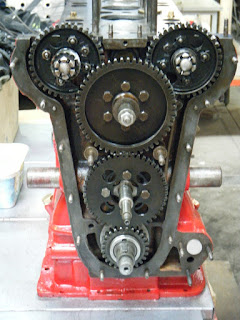In this neck
of the woods, when we remember Jim Lee we think about Mick Grant, motorcycle
and car racing.
 |
| Jim and Mick Cadwell Park 1971 |
However there was far more to Jim and his
exploits over the years than meets the eye. Apart from his time as a
professional wrestler (“he who never quits”), Jim was involved in all manner of
business, many of which you could not have imagined in a million years. I
suppose it just goes to show what an active mind he had and endorses that old statement
‘you can’t keep a good man down’.
In Jim’s
case this was certainly true.
This is a
short blog about one such venture.
Jim had a
great friend who lived nearby in Brighouse by the name of Joe Chapman.
Joe was also
a keen motorcyclist and had raced many different machines with much success over
the years 1959 – 1969.
It is fair to say that within the Batley MCC, Joe was
someone to look up to.
 |
| Joe Chapman AJS 7R Manx Grand Prix |
Jim and Joe were the best of friends and as a
twosome, often took centre-stage at club nights in the Talbot Pub. These events
were known locally as ‘Jim & Joe nights’, there was no political
correctness here and in those days nothing was off limit. Generally the pair of
them brought the house down.
Following a
visit to The Castle Museum in York, the pair decided that they could make a far
better reproduction of a 16th century English helmet than the
fibreglass item currently on display.
‘If Jim
could make it then Joe could sell it’, it was as simple as that.
 |
| 16th century English helmet |
The fact they had never made anything remotely like this before and that all Jim’s fabrication experience related to motorcycle and car racing, was not even an issue.
So it was
decided in 1975 to ask the Museum Curator for the loan of an original helmet on
which they could base their work. This was provided along with some helpful
advice on design features of the period. Never a pair to be fazed by events,
they also sought further assistance from the Keeper of Blades and Keeper of
Armour at the Tower of London Armouries.
Both Jim and
Joe were clearly confident in the future success of this enterprise and Jim
immediately converted half his engineering works at the Old School House,
Birstall into a mini-armoury. Much of the machinery used in the making of the
helmets was designed and manufactured by Jim himself and followed the lines of
that used by the ancient craftsmen of the period. Many of the processes were
carried out by hand, as it was impossible to replicate the original finish on
mechanised equipment. The helmets were made from mild steel, highly finished
and produced at a rate of ten per week.
 |
| Crusader reproduction helmet |
As you might
expect, their work was of the highest order and approval was given by both
museums for them to be displayed and sold through their souvenir shops. It was
not long before further requests for additional armour were made, the following
letter is a glowing endorsement.
On the sales side Joe kept his word, establishing contacts with museums and British Consulates abroad and in the US becoming a lucrative market.
 | |||
| U.S. Price List |
But I suppose like all good things, it had to come to an end.
After all
there are only so many Crusader helmets that can be sold in a modern world.
Even if your
name is Joe Chapman………
















